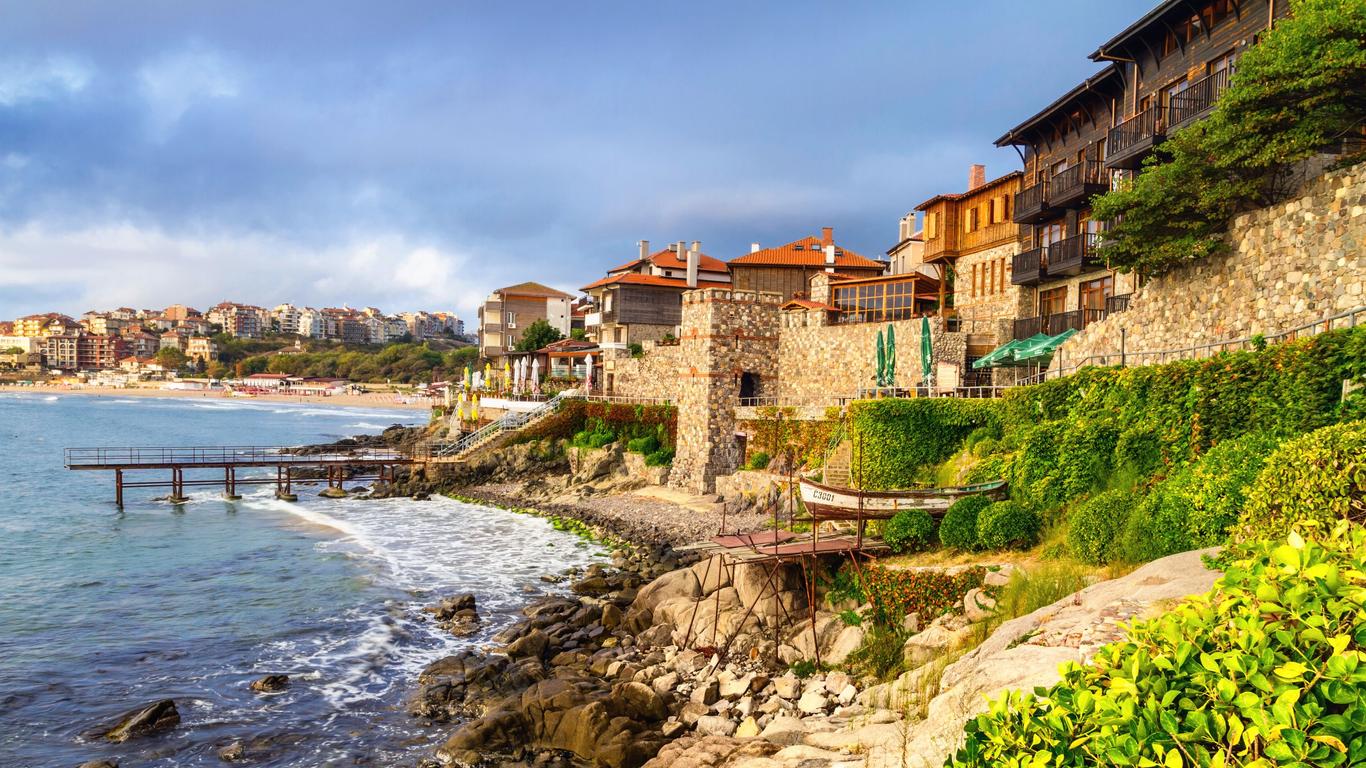1. Sea Gardens: Culture on the Coastline
The Sea Gardens, built by landscape artist Georgi Duhtev in 1910, are considered among the most beautiful parks in Bulgaria. With a wide variety of exotic plants from around the globe, this seaside park lies on 150 acres of coastline. Among the attractions visitors will find the Sea Casino, a cultural and recreational center; the Snail, an open-air amphitheater that hosts nightly performances; and a number of sculptures. Annual festivals include Flora, an international flower show; the Burgas and the Sea Song Contest, the International Folklore Festival; the Spirit of Burgas Music Festival; and the Turn on the City Contemporary Art Festival.
2. Lake Atanasovsko: Free Spa Experience
Lake Atanasovsko is world-famous for its black mud and lye pools, which are said to have healing properties. A free outdoor spa, the lake contains silicates, sand, gypsum, iron, aluminum compounds, hydroxides and salts, which have resulted from centuries of natural fruition. Lake Atanasovsko is said to possess thermal properties that reduce swelling and pain, heal wounds and minimize scarring. The lake is especially recommended for those suffering from skin afflictions, such as arthritis and plexitis, as it supplies calcium, iodine and phosphorus to the skin. The area is also known for its hundreds of migrating bird species.
3. Poda Protected Area: Natural Bulgarian Wonders
The Poda Protected Area is a nature reserve that displays a variety of natural wonders. Visitors are invited to view the permanent exhibition, which showcases the biological diversity of Bulgaria, including hundreds of plant, fish and amphibian species. The area is also renowned for its migrating birds, which include the Eurasian spoonbill and the great cormorant. Via Pontica is Europe's second largest migration route crosses the Poda. In winter, bird watchers can observe endangered species such as the pygmy cormorant, the Dalmatian pelican and the white-headed duck. The reserve is also home to the eastern four-lined snake, the largest in Bulgaria, the Etruscan shrew, the smallest European mammal, and the endangered otter.
4. St. Anastasia Island: Shrouded in Medieval Legend
St. Anastasia Island in Burgas Bay in the Black Sea is a volcanic rock island that stands 12 meters high. Spread over two acres, the island is shrouded in mystery and legend. It is said that when pirates attempted to raid the island, the monks living in the monastery prayed to St. Anastasia for help. She answered their call by sending a storm that split the pirate ship in two. The remains of the vessel are still visible in fossilized rock. Among the attractions on the island are the 15th century church that houses numerous Medieval murals, the lighthouse built in 1889 by a French company, and the hotel and restaurant that features authentic Burgas cuisine.
5. Ethnographic Museum Burgas: Steeped in Old World Tradition
The Ethnographic Museum near the Saints Cyril and Methodius Cathedral is housed in a 19th century palazzo. Showcasing traditional Burgas cultural artifacts, the museum is highly-regarded for its collection of costumes including those linked to popular celebrations such as the nestinarka, kuker, enyova bulya and lazarka. The museum is a historical gallery that works to preserve the region's archaeological, ethnographic, and natural history. Visitors are also welcome to view the center's jewelry, furniture, and weaving collections.

